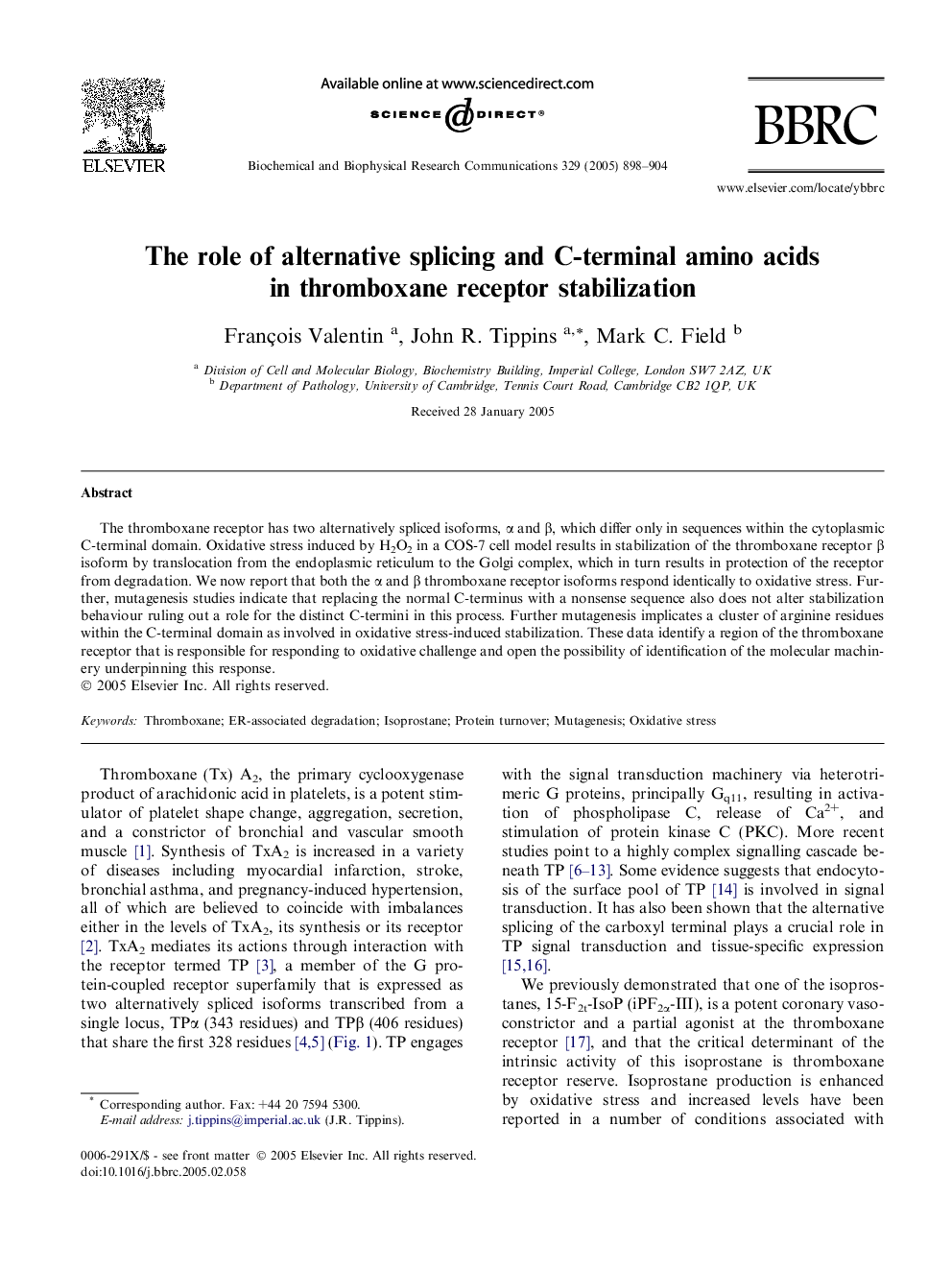| Article ID | Journal | Published Year | Pages | File Type |
|---|---|---|---|---|
| 10771061 | Biochemical and Biophysical Research Communications | 2005 | 7 Pages |
Abstract
The thromboxane receptor has two alternatively spliced isoforms, α and β, which differ only in sequences within the cytoplasmic C-terminal domain. Oxidative stress induced by H2O2 in a COS-7 cell model results in stabilization of the thromboxane receptor β isoform by translocation from the endoplasmic reticulum to the Golgi complex, which in turn results in protection of the receptor from degradation. We now report that both the α and β thromboxane receptor isoforms respond identically to oxidative stress. Further, mutagenesis studies indicate that replacing the normal C-terminus with a nonsense sequence also does not alter stabilization behaviour ruling out a role for the distinct C-termini in this process. Further mutagenesis implicates a cluster of arginine residues within the C-terminal domain as involved in oxidative stress-induced stabilization. These data identify a region of the thromboxane receptor that is responsible for responding to oxidative challenge and open the possibility of identification of the molecular machinery underpinning this response.
Related Topics
Life Sciences
Biochemistry, Genetics and Molecular Biology
Biochemistry
Authors
François Valentin, John R. Tippins, Mark C. Field,
